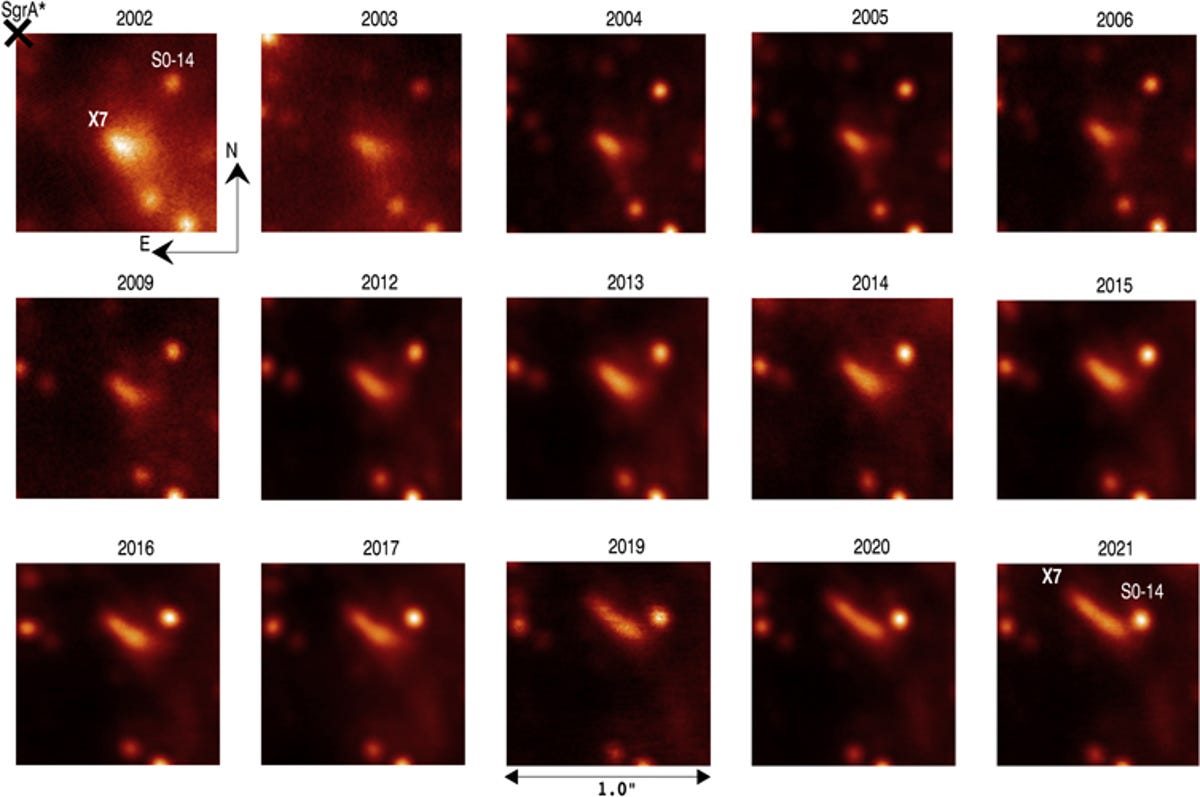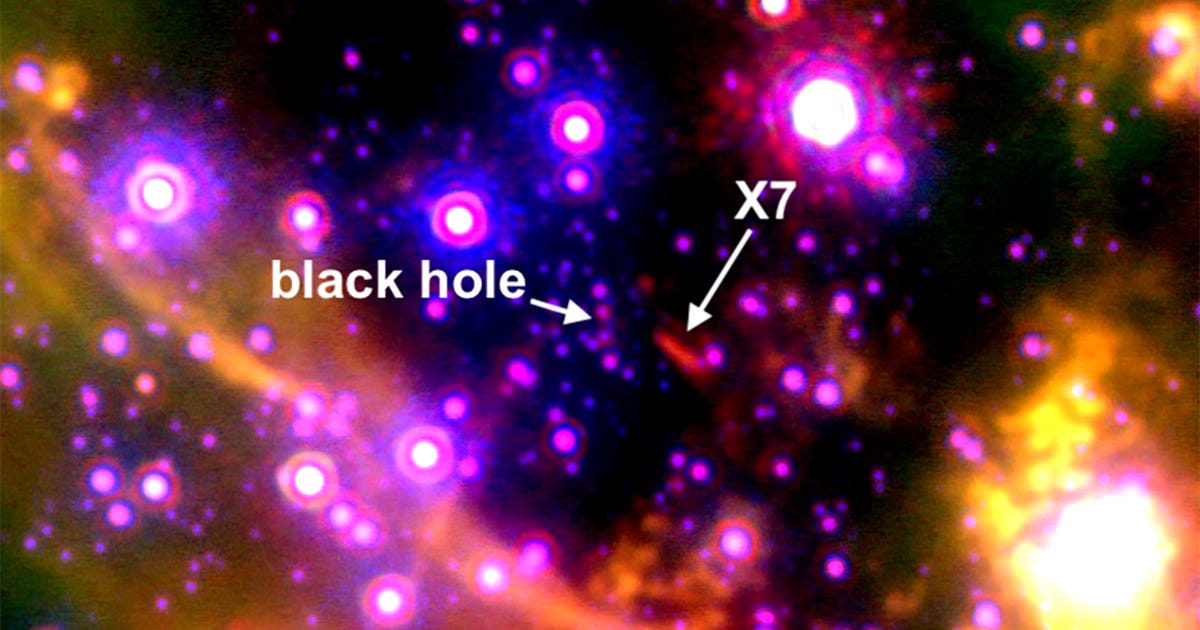Last week, scientists presented us with yet another episode of The Scary Supermassive Black Hole Diaries. Sitting right in the center of our home galaxy, a gargantuan void named Sagittarius A* has been caught on camera terrorizing a giant blob of interstellar debris.
While this stunning event itself isn’t exactly a new discovery, the team of scientists’ latest details, published on Feb. 21 in The Astrophysical Journal, have painted the best picture yet about this enormous blob’s doomed story.
To be clear, Sgr A*, and therefore everything in its close vicinity, lies more than 20,000 light-years away from our vantage point on Earth, which technically means this extreme situation happened more than 20,000 years ago. We’ve only captured the footage now because it took that long for luminescence stemming from the tempest to reach our telescopes. For the sake of discussion and my general sanity, however, I’m going to talk about it in the present tense.
Returning to our intriguing cloud of dust and gas, this object is named X7, has a mass equivalent to about 50 Earths and appears to have been swirling around Sgr A* for decades at ungodly speeds reaching about 700 miles per second. But most importantly, experts have been carefully tracking X7 for the longest time because of its quite perplexing form — it looks like a Tic-Tac — and the fact that it has been shapeshifting a little too quickly for comfort.
Now, the cinematic story of X7 is out in the open for us all to gawk at.
“No other object in this region has shown such an extreme evolution,” Anna Ciurlo, an assistant researcher at the University of California, Los Angeles and lead author of the paper, said in a statement.
As Ciurlo explains, X7 started off comet-shaped. But she and fellow researchers followed it for about 20 years, during which time they watched it become longer while it treaded deeper… and deeper… into Sgr A*’s gravitational tides.

Here you can see the evolution of X7’s shape as the black hole dragged it closer over the years.
Anna Ciurlo/UCLA
“It’s exciting to see significant changes of X7’s shape and dynamics in such great detail over a relatively short time scale as the gravitational forces of the supermassive black hole at the center of the Milky Way influences this object,” Randy Campbell, a co-author of the paper and the science operations lead at the Keck Observatory, a machine that aided in the team’s analysis, said in a statement.
Theoretically speaking, the researchers think it’d take X7 something like 170 years to complete its orbit around Sgr A* — but in truth, this blob probably won’t get that far.
The embrace of a black hole is relentless.
“We anticipate the strong tidal forces exerted by the galactic black hole will ultimately tear X7 apart before it completes even one orbit,” co-author Mark Morris, a professor of physics and astronomy at UCLA, said in a statement.
Which brings me to episode 852, probably, of The Scary Supermassive Black Hole Diaries. Here’s what will most likely happen to X7 during its ultimate demise.
Flying into the centre of the Milky Way to reveal the first image of black hole Sgr A*.
EHT Collaboration
When thinking about supermassive black holes, it isn’t uncommon to imagine them “devouring” or “sucking in” pieces of our universe, perhaps even to the tune of a menacing film score. Looking at you Hans Zimmer. But in reality, these voids are far more passive than you’d expect — and that’s what makes them all the more terrifying.
Scattered across the fabric of space, black holes kind of just sit there with their immense gravitational might until a star – or interstellar cloud, in this case — accidentally treads a little too close. Immediately and effortlessly, the beast’s gravity starts to compress, stretch, twist and bend that unlucky orb. That’ll keep happening until the thing looks like a looooong noodle. This process is (quite aptly) called spaghettification.
Slowly, the noodled thing falls closer toward the black hole, crossing even the hazy boundary between our universe and whatever lies inside the abyss — the event horizon.
Beyond this region, nothing can escape. Not atoms, not sound, not light and definitely not the black hole’s now shriveled-up X7 dinner. No, this thing would no longer be a part of our universe by then. It would be a part of some other reality that we, humans, cannot access without suffering the same fate.
And then, the blob will be “gone” forever.
As for what, exactly, X7 is? And where did it come from?
“One possibility is that X7’s gas and dust were ejected at the moment when two stars merged,” Ciurlo said, emphasizing that such star mergers are very common near black holes. “In this process, the merged star is hidden inside a shell of dust and gas, which might fit the description of the G objects. And the ejected gas perhaps produced X7-like objects.”
Although, even with the team’s wonderful new lens on the object, that bit is still a mystery.

